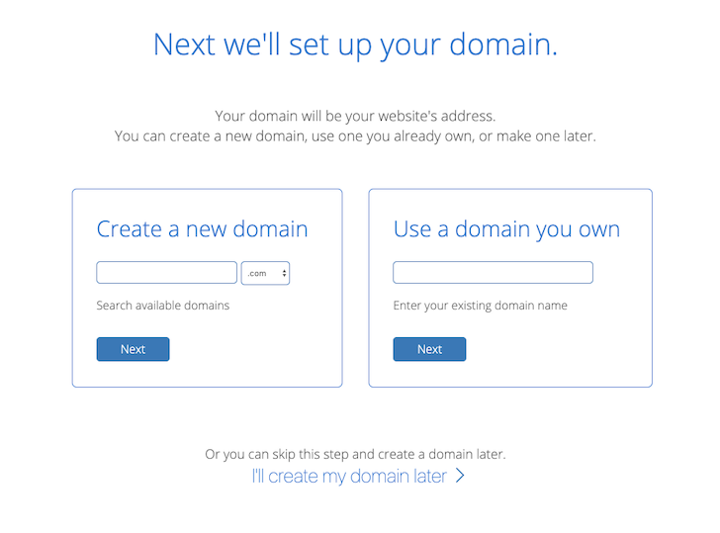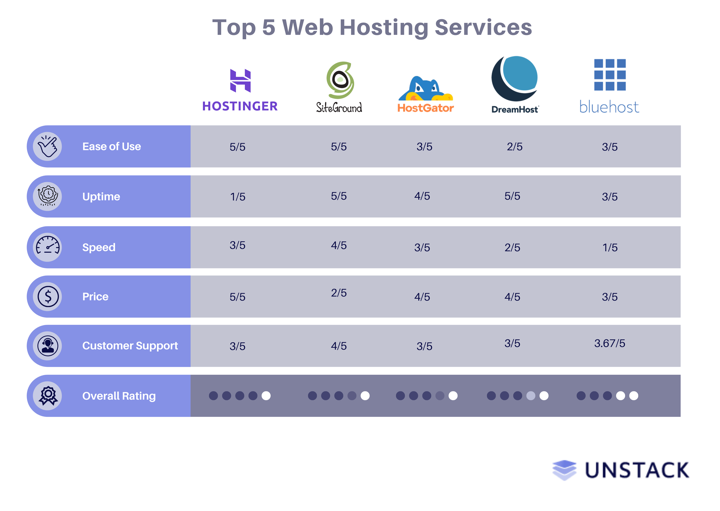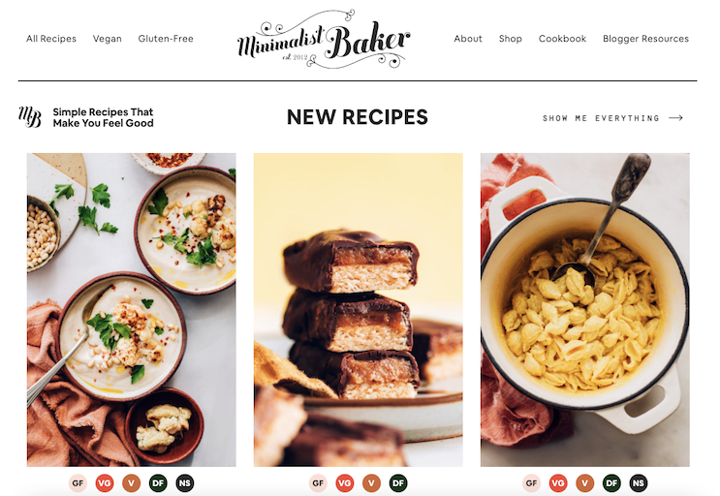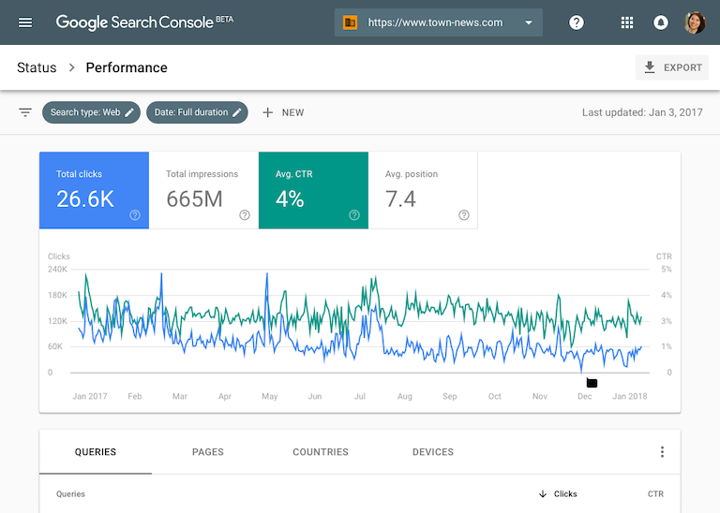Did you know there are over 1.7 billion websites online today? You might find that a bit intimidating if you’re planning on building your own site, but don’t. There’s a corner of the internet just for you.
Not everyone can justify the expense of outsourcing their site to a dedicated team of professional web developers or even contracting a web designer. But the good news is you don’t have to. With easy-to-use, no-code website builders, anyone can build their own website with a little time and effort—and without any programming skills.
We’ll walk you through how to build your own website from scratch in just nine steps:
- Choose a domain name
- Register the domain
- Find hosting for your site
- Settle on your website design
- Add your integrations
- Create your core pages
- Add content to your website
- Set up social media accounts
- Test everything before going live
Here’s how.
1. Choose a domain name
The domain name you choose for your website is so important. Not only does it tell people who you are, but it’s also crucial to helping them find you.

Avoid making your domain name overly complicated or too long. Don’t use abbreviations that might make it harder for people to remember your name.
Try and choose a name that’s memorable and informative. Ask a few close friends before you make a decision and get their opinion on it.
Wherever possible, try not to use numbers or hyphens. This might be harder than it sounds as there are so many domains out there now that the exact one may not be available.
Before you commit to anything, do a little research and make sure that no one has trademarked or copyrighted the name. You could face some potential legal trouble down the line.
You might be tempted to use a free domain, such as one that comes with some website builders. Some of the most common are your site.wordpress.com or yoursite.weebly.com. If you’re building an e-commerce site, you might be tempted to for the shopify.yoursite.com option.
While this might seem like a good way to get your site up and running for a lower cost, there are a number of downsides to going down this route.
First, it looks pretty unprofessional. People want to visit sites that they can trust and a free domain name with an extension like wix.com doesn’t give you that professional-looking edge. This is even more important if you’re planning on selling anything online.
Second, if you ever want to move your site to a different platform, for example from WordPress to Unstack, you can’t take this free name with you, you’ll have to choose something else.
If you want your site to rank well on Google, ditch the free name. Having a domain name that is similar to your site or product name is better for your search engine rankings, too.
Really, a domain name doesn’t cost very much so don’t take any chances and buy your own.
2. Register the domain
So you’ve chosen a domain name, how do you go about buying and registering it? There are many ways to do this.

The price depends on a number of factors, such as what domain extension you’re looking for, the length of time you want to register it for. There are often special offers to be had if you look around.
It’s a good idea to have a site with an SSL certificate too. This is an extra layer of protection for those visiting your site.
Good news for Unstack users—we’ll take care of your SSL certificate and any renewals necessary for you so that you can stay protected without worrying.
If a domain name has been purchased with the intention of being resold, then you will probably pay a premium price for these. Buying a pre-existing, aged domain also has its advantages. Established domains rank higher on Google, too.
3. Find hosting for your site
The hosting provider you choose is one of the most important decisions you can make about your website. Your provider will host your website (and email if you’ve purchased this service) and files.
There are many hosting providers out there, each with its own range of services and special offers. Unstack offers hosting for all users. Some other common hosts include Hostinger, SiteGround, HostGator, DreamHost, and Bluehost. Our friends at Crazy Egg tested each host thoroughly to determine their strengths and weaknesses.
Hostinger: Best Web Hosting for Most
Hostinger is ridiculously affordable, but doesn’t feel like cheap hosting. They give you everything you need to launch your website fast. They do lack a few premier features, but don’t sacrifice essentials or quality where it counts.
SiteGround: Best Hosting for Keeping Uptime Above 99.99%
SiteGround flaunts the most reliable servers in web hosting. They destroyed the competition. But, they are not cheap. If you want reliability and can afford higher than rock-bottom pricing, SiteGround is an excellent choice.
HostGator: Best Web Hosting for Scaling Your Small Business
HosGator can easily grow with your business because of the variety of affordable plans they offer. WordPress Hosting, VPS, and dedicated hosting are all options. They make it incredibly easy to scale up.
DreamHost: Best Pay-As-YouGo Web Hosting
DreamHost offers the best month-to-month plans by far. If you’re looking for risk-free hosting with no contract, look no further. They fall a little short in a few categories, but their flexibility makes up for it.
Bluehost: Best Drag-And-Drop Page Builder for Beginners
Bluehost makes creating a website extremely easy. Anyone that can point and click a mouse can create a website with no experience needed. Bluehost is a great option if you want help building your site while simultaneously setting up your hosting.

When choosing a host, it’s easy just to head for the cheapest deal, but that might not be the best decision. You also need to take into account features such as:
- Security and backups
- Customer service
- Storage limits
- Free SSLs
- Email inboxes
- Guaranteed server uptime
If a special offer has caught your eye, make sure you read the small print and know what price you’ll be expected to pay when the offer period is over.
4. Settle on your website design
You’ve chosen your domain name and signed up with a hosting provider. Now it’s time to get into the exciting part: creating your website.
Unless you’re an experienced web designer, you’re probably going to need some help in the website design process.
Luckily there are many options that allow even the most inexperienced of people to achieve a professional-looking website, without having to learn to code.
Templates have become the most common way to create a website. Whether you choose to use the template as is or adapt it to match your brand and meet your needs, they are very versatile.
Unstack offers website templates, and it also offers a component library so that you can customize any page for your branding without being limited by design or coding skills. You can see more or try it out here.

We used components and templates in our own recent homepage redesign here at Unstack.
5. Add your tools
Templates define the look and feel of a site, but much of the functionality, both onscreen and behind the scenes is achieved using your tools through plugins or integrations.

There’s a content marketing tool for almost everything and many of them are completely free or offer premium versions for a reasonable price. You should consider tools for the following when you first set up your site:
- Content Analytics: This includes monitoring your traffic and search volume, so Google Analytics and Google Search Console are good (and free) places to start.
- Social sharing: Connecting your LinkedIn, Facebook, Twitter, and more.
- SEO: You want to make sure your site is optimized, and you can use a tool like Ahrefs or Semrush to check on this.
- Chat: Conversational marketing is expected in many industries, so make sure to check on this.
You can start with the basics and add more as and when you need them. Plus, some tools will be available in your CMS. Unstack, for example, will automatically integrate with Google Analytics, Google Search Console, and Semrush.
6. Set up your core pages
Now, you’ve made it: It’s time to start to create the structure of your website. You can begin by creating the basic pages you’re going to need. Here are the essentials that we recommend:
- Homepage
- About page
- Contact page
This is the bare minimum, but it’s a good place to start. It’s easy to get carried away and start creating lots of pages, but at the beginning, create one page at a time and complete it before you start moving on to the next.
If you’re running a business or ecommerce site then you need to take advantage of the major directories, such as Google My Business and Bing Maps. You should also find a privacy policy template to make sure your users understand how you’ll use their data.
7. Add content to your website
Once you have the structure of your site, you’re going to need to create content for it. Ensure that your text contains your keywords and phrases.

Spice up your site with good quality images, either one of your own or stock photos from a site such as Unsplash of Pexels. Or create your own with graphic design software like Vectornator or Canva.
Never just take an image from Google or another website. This is against the law and you could end up having to pay a lot of money for breaching copyright.
8. Create social media accounts for your business
Traffic to your website is going to come from a number of sources. One of these will be social media. By sharing your website posts and pages on social media, you can drive visitors to your website.

There are a number of social media platforms to choose from. Rather than trying to be everywhere. Think about which platforms your target audience use before deciding. The most popular social media platforms include:
Start by sharing your content with friends and family to ask them to engage with your content and share it with their networks and take advantage of social media marketing tools to boost your efforts.
You can build on this by moving to paid advertising on Facebook and Google. You’ll be able to test out elements of your brand, messaging, and design to see what appeals to people. You can then incorporate these elements into the design of your website.
9. Test everything before going live
The last stage in the website design process is key: testing. This is where you check the entire website to make sure everything is working and looks and acts how it should.
As part of this process, you should check that your site is optimized for all screen sizes, especially mobile. Google’s algorithm penalizes sites that do not work well on mobile.

If your site design doesn’t optimize automatically, you can make different pages for mobile. Use Google Search Console to keep track of your site and alert you should anything stop working as it should.
If you want to go even further into optimizing your site, look at Hotjar and Smartlook to really get in-depth insights into user behavior. You can look at introducing A/B testing to work out what aspects of your site design work best for users. Unstack users, this will be simple. You have contact tracking and A/B testing available right in the platform automatically.
The key to building your own website from scratch? Plan
Building your own website can be a really exciting and worthwhile project. But it’s sometimes difficult to know where to start. The more you look into it, the more overwhelming it can seem.
The key to a successful website design process is to plan everything out and just take it one step at a time. Don’t get ahead of yourself or jump around from place to place in the project.
Before you know it, you’ll have a website to be proud of that you’ve built yourself from scratch!
